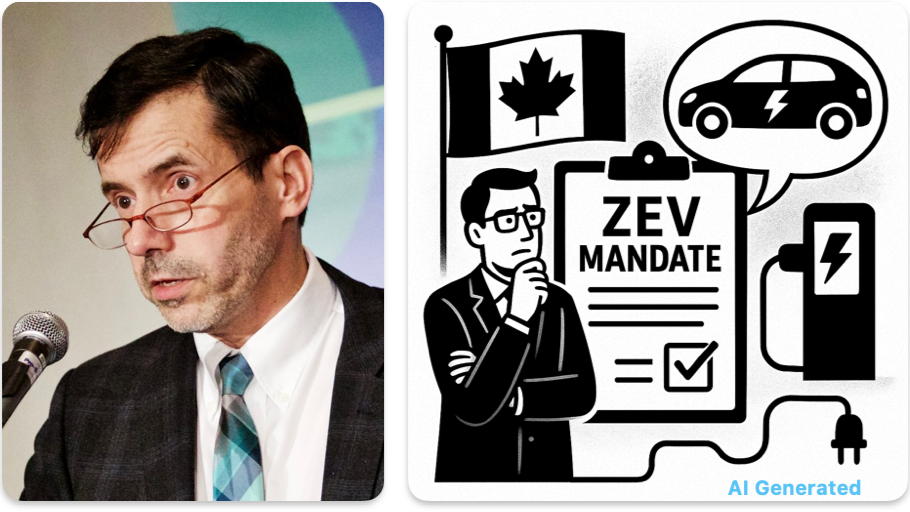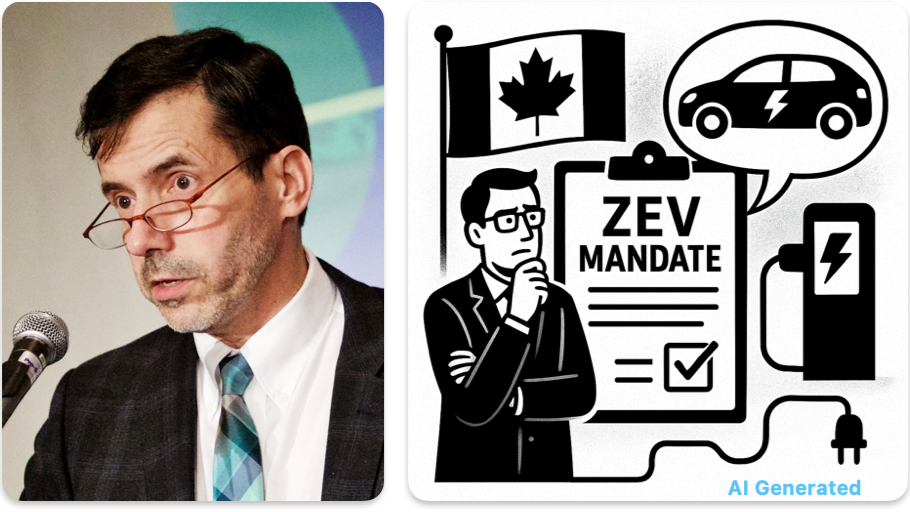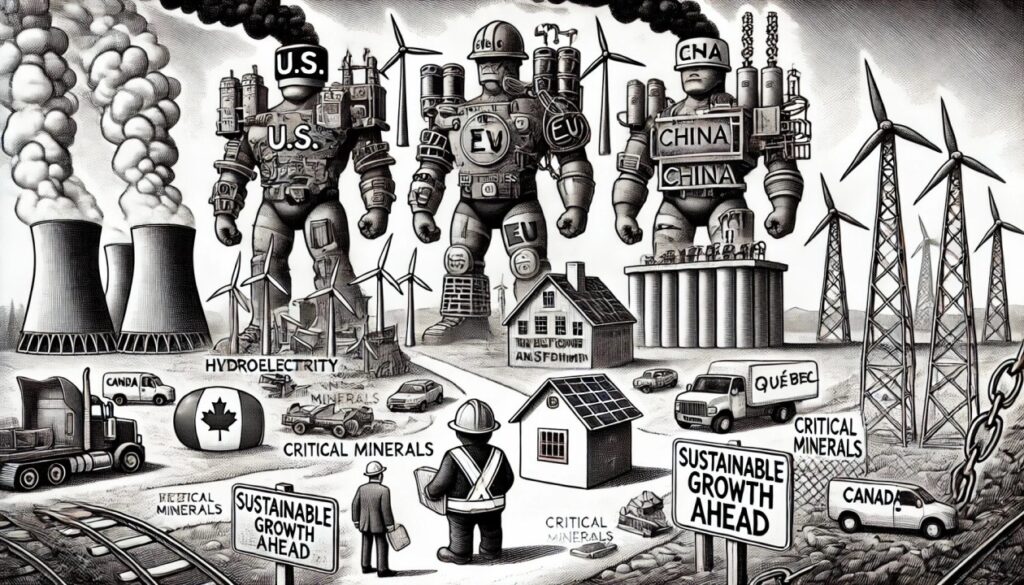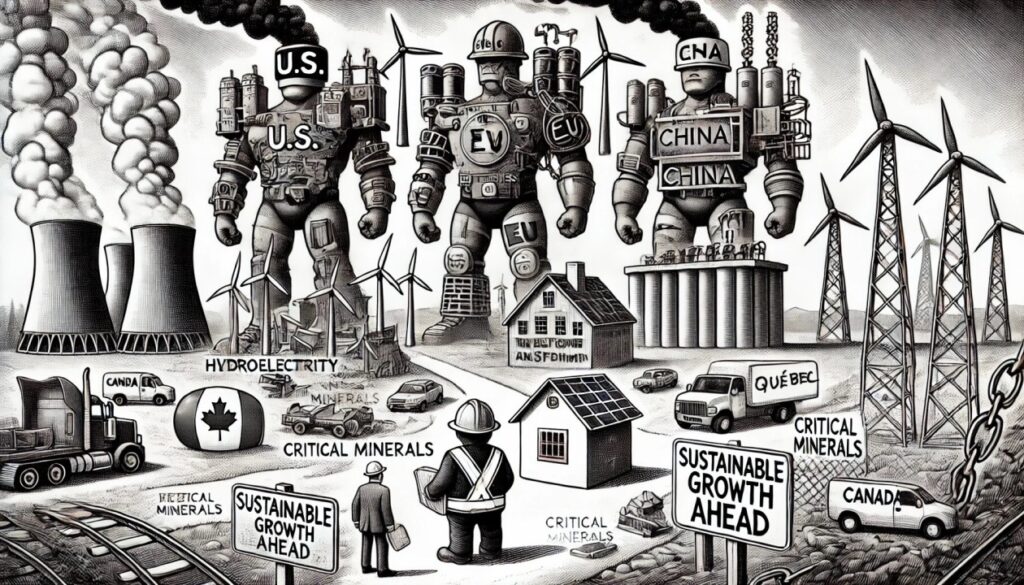
Canada’s automotive sector is at an inflection point. With CEOs urging Ottawa to soften the ZEV mandate, U.S. policy diverging, and tariffs reshaping trade, the question is how Canada stays competitive now while preparing for an electric future. This article sets out a plan that is robust in the first years and scalable thereafter.
(LinkedIn: https://www.linkedin.com/pulse/canadas-zev-mandate-fragmented-north-american-market-benoit-marcoux-234ie/)
Electrification is the direction of travel. According to the International Energy Agency’s Global EV Outlook 2024, global EV sales have already surpassed pre?pandemic growth trends and are projected to reach over 60% of global sales by 2035 under stated policies. BloombergNEF and IEA data indicate that global peak ICE sales occurred between 2017 and 2019, with volumes now in structural decline—a trend likely to accelerate as charging networks expand. This turning point means delaying action would be costly to reverse. Staying the course on electrification can deliver major payoffs in investment certainty, supply?chain anchoring, and public?health and consumer cost savings. The strategic prize is to be ready when the world, including the U.S., decisively turns electric.
Automaker CEOs in Canada have urged Ottawa to repeal the ZEV mandate in private letters and meetings with the Prime Minister, as reported by CBC News and Bloomberg in mid?2025, and I understand why. If the U.S. weakens vehicle emissions rules and shifts capital back to internal combustion trucks and SUVs while Canada keeps its focus on EVs, we risk losing integration with the North American EV supply chain and its economies of scale.
However, stepping off the mandate would lock in higher emissions and leave Canada behind Europe and Asia, where policy remains firm despite tighter trade defences.
Add Mexico to the picture. Mexico is a top vehicle exporter benefiting from nearshoring. If the U.S. EV push slows, Mexico can still attract EV and component investment for Latin America and beyond. Partnering on materials?to?modules value chains preserves North American scale and positions both countries to accelerate when U.S. policy shifts.
Data point: In June 2025, Canada imported about C$1.08 billion in passenger vehicles from Mexico versus ~C$950 million from the U.S., the first month Mexico led by value; this supports a Canada—Mexico pipeline while U.S. policy is uncertain.
Two plausible paths
- Short separation (2–4 years): the U.S. realigns EV rules and incentives, restoring continental scale.
- Long separation (5–10 years): tariffs and policy divergence persist, with Canada and Mexico carrying more of the regional EV momentum.
Because these two scenarios diverge only after a few years, the early stage must be the same: a no?regret plan that works under either path.
First three years: no?regret plan
- Keep the ZEV trajectory with flexibility: allow credit banking and limited borrowing, and offer a transitional, declining PHEV credit tied to real-world electric use.
- Strengthen demand clarity and infrastructure: restore predictable point-of-sale incentives aligned with vehicle efficiency and battery sustainability (carbon footprint and responsible sourcing), and expand public charging and residential retrofit charging to reassure consumers.
- Secure continental scale: build a Canada—Mexico pipeline ahead of the 2026 CUSMA review on rules of origin, charging standards, logistics, and a shared battery passport.
- Anchor supply chain investment: lock in platform agreements (production allocations, shared R&D, or supply deals) with European, Chinese, Japanese, and Korean OEMs, and secure long-term contracts for critical minerals and recycling.
Years 4–10: actions by path At year three, the plan forks by path.
If U.S. policy realigns by 2028 (short separation):
- Phase out the PHEV bridge; sunset credit borrowing by 2030.
- Tighten banking limits and prioritize Canada—U.S. content and cross?border EV corridors.
- Harmonize charging, payments, and data; recognize credits reciprocally to speed scale?up.
If separation persists for 5–10 years (long separation):
- Create a ring?fenced Canada—Mexico compliance lane with higher credit multipliers for compliant content.
- Deepen domestic midstream battery supply chain (cathode/anode, motors, power electronics, software) and fast?track grid connections.
- Maintain finished?vehicle guardrails while selectively opening component/tooling channels with strict security and traceability; build export routes to the EU and Latin America.
Policy coherence and stability
These principles underpin both plausible paths and should guide choices regardless of how U.S. policy evolves. They also highlight a structural challenge: unlike China’s centralized model, Canada’s democratic process requires consultation, debate, and compromise—making coherence harder but legitimacy stronger.
- Align domestic measures through structured consultation, transparent impact assessments, and parliamentary debate to strengthen social acceptability.
- Anchor EV and supply-chain rules in international agreements (e.g. Canada—Mexico, Canada—EU, Canada—Japan). These bring greater certainty than domestic policy alone, which a future government could reverse.
- Guardrails on Chinese partnerships must be explicit: technology transfer, royalties, and sourcing transparency, so cooperation does not turn into dependency.
- Investors need stable rules. Policy whiplash deters financing more than ambitious targets.
Why this balance matters
The payoff: Be ready when the world, including the U.S., decisively turns electric, earning priority for platform allocations, supplier investment, and export corridors.
- The mandate provides investment certainty and built?in flexibility to reduce compliance risk if the U.S. market slows. At the same time, strong supply?chain commitments position Canada as a core of the EV ecosystem, ready to scale when the cycle turns.
- Predictable point-of-sale incentives, together with visible investment in public charging networks and support for residential retrofit charging, sustain consumer demand and give buyers confidence that EV ownership is practical and convenient.
- Guardrails and a Canada—Mexico compact preserve resilience, balancing global competition with regional stability.
Canada need not choose between ambition and realism, or between continental integration and diversification via Mexico. We can hold the line on outcomes, adapt the path, and be ready to lead when North American politics shift and the market decisively turns electric.
What steps should Canada prioritize now?









